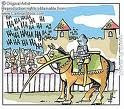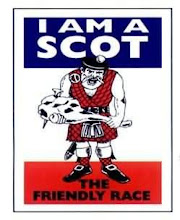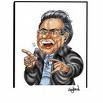Your material is your 'baby', and, as such, you have to give a lot of thought to it's proper delivery. I've put a little thought into the matter, but got reading a book by Larry Wilde, and he says it better than I've been able to. Wilde, a motivational humourist, has written many books; two that I'd suggest are, "How The Great Comedy Writers Create Laughter", and, "The Great Comedians Talk About Comedy." I'd suggest either and/or both. An excerpt of his, below, addresses proper delivery.
It’s All In The Telling:
The old adage “it’s now what you say but how you say it,” is the very essence of communicating humour. Tone of voice is all important. People respond more to the tone than to the words. The funniest joke in the world will not receive its just due when obstructed by poor delivery.
Delivery is the articulating of words in a manner or style that is convincing, authoritative, dramatic and entertaining.In delivering a joke, listeners respond strongly to the tone used by the joke teller. The storyteller must get the essence of the subject matter across in a simple and direct manner. This is particularly important in verbal communication but especially critical when the goal is to evoke laughter.
Benefits of Good Delivery
There are at least four major benefits when comedy material is well delivered:
The deliverer commands attention.
An audience becomes totally absorbed in the words used and is mesmerized by the tone in which they are expressed. They eagerly await each word and are caught up in the fervor, sincerity and enthusiasm of the performance. A good delivery captures attention and holds it.
Intimacy is established with the audience.
Good delivery conveys authority. If the words are convincing, exciting and entertaining, the audience is won over and they are anxious to hear every detail. A smooth, polished delivery establishes a closer rapport with the audience and makes listening a pleasureful experience.
The audience laughs more easily.
When people are induced to listen closely because of how something is said they automatically absorb what is said more easily. It is vital that the speaker use every available device to insure that listeners understand each word. When clear comedic thoughts are expertly communicated the audience will respond. Good delivery paves the way to laughter.
Competency is conveyed.
The audience senses that the speaker knows what he or she is doing. Self-assurance is perceived and the humorist gains respect. People willingly dismiss whatever reservations or doubts the might have had. They feel safe and comfortable. The performer becomes their leader, their guide, their guru, a person they can admire.
An audience will eagerly and anxiously surrender its emotions to someone they trust. A strong, dynamic style captivates an audience. It conveys confidence and believability. But most of all, good delivery makes a statement: I am competent, skilled and gifted.
Elements Of Good Delivery
Gestures.
The calculated use of hands and arms in invaluable. Pointing a finger, making a fist, holding up the hands or waving the arms at an appropriate moment helps to accentuate the meaning of what you’re trying to convey. The gesture is the speaker’s picture-painting device, and the premier technique for reaching across the distance between you and the audience. Gestures demonstrate. The dramatically illustrate and emphasize what you are saying.
For a real education in the art of gesturing, watch the great pantomimist, Marcel Marceau. After an evening with this French virtuoso, you’ll very quickly understand and appreciate the importance of movement. It is the body’s silent articulation.
Body movement.
The acts of posturing, posing, strutting, staggering, shrugging, bending, kneeling, leaning or bowing assist in creating the word pictures your are trying to paint. Body language is the message behind the words. It’s been said that true communication is:
7% wordsFacial Expressions.
38% voice quality
55% body language.
The simple raising of an eyebrow, squinting, sneering, smiling, grinning, any use of facial muscles provides an additional dynamic dimension to what you are saying. You help the joke with action. An animated, expressive face prompts listeners to laughter.
Vocal Variety.
Lowering or raising the pitch of you voice, speaking louder or softer, saying something sweetly, respectfully, angrily, shouting, whispering or pausing for effect are attention getters. Imagine how flat music would sound if it had no dynamics – no exciting crescendo or breathless pianissimos. In the same manner that dynamics add fire to music, vocal variety adds excitement to the spoken word. A well-modulated voice is stimulating and evocative, whereas a dull monotone speaker is a boring communicator with a ho-hum delivery.










































































No comments:
Post a Comment